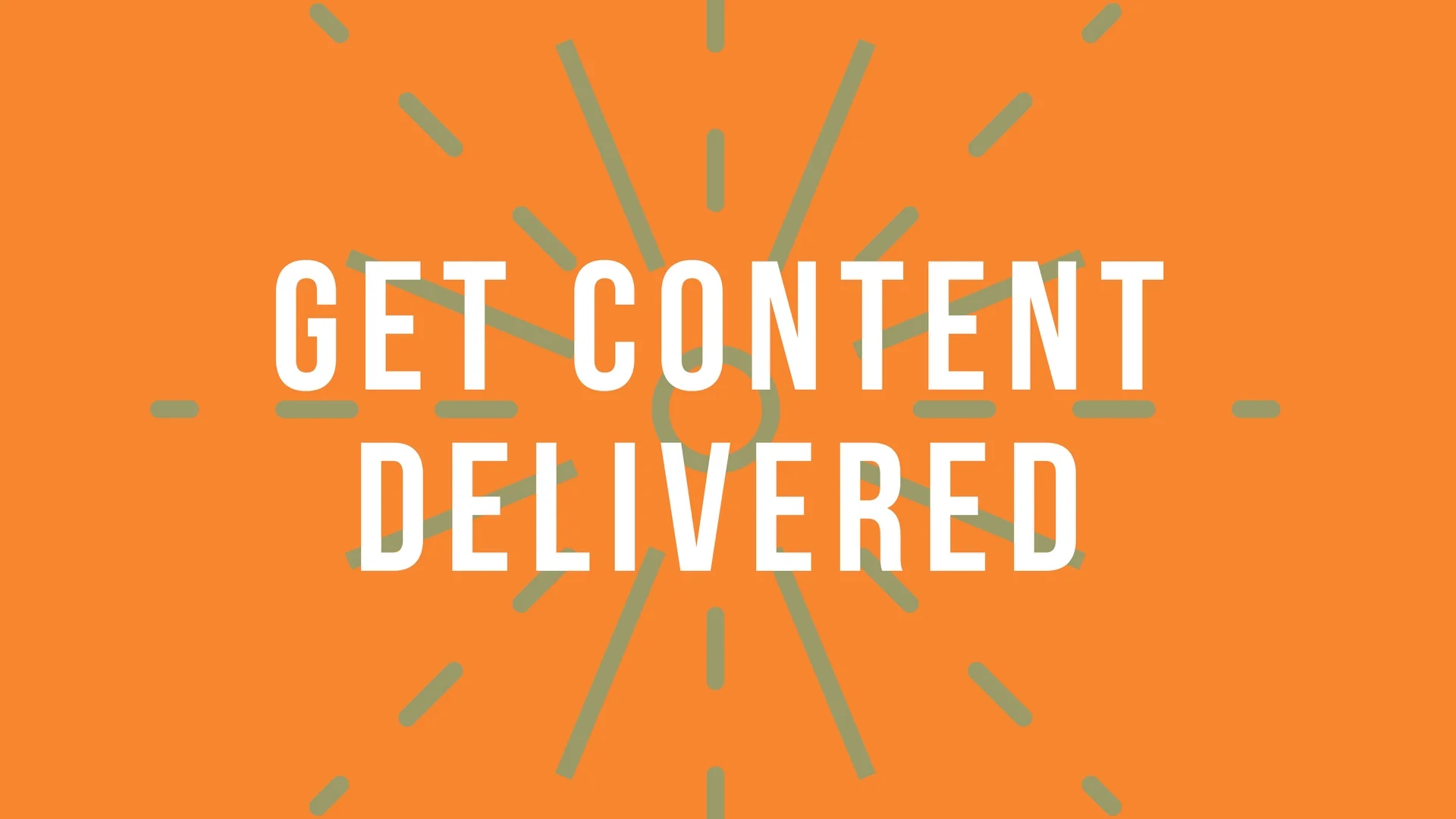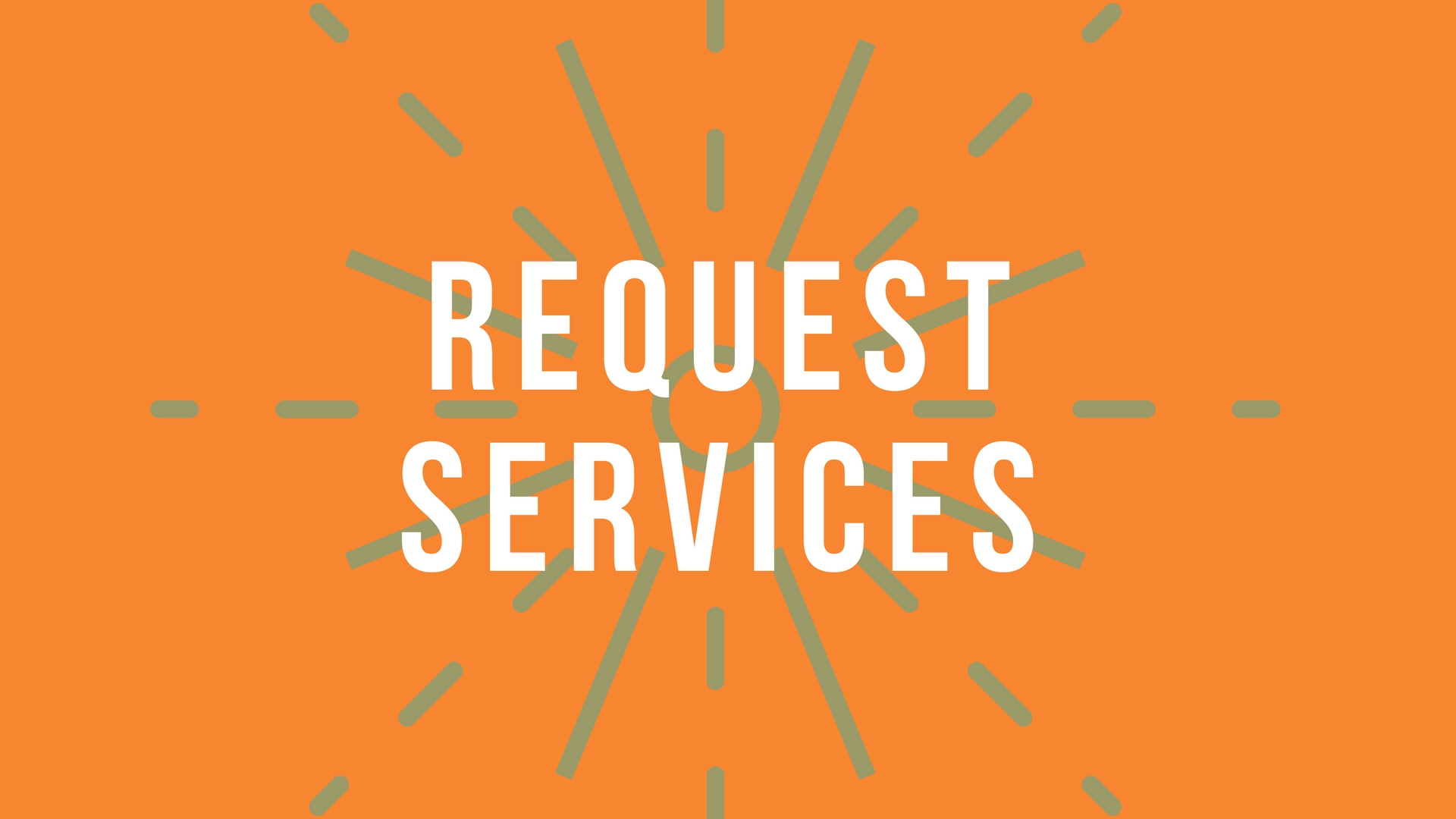Mapmaking Vs. Arguing - [A Suggested Method For Disagreeing Well]
/Stop agreeing to disagree - do this instead:
I sense that I don’t have to make a case for how divided we are as human beings.
Simply say the words “gun control” or “abortion” or “wall” and see what happens. I mean, it seems like the American National Anthem can’t be played without someone getting a bit feisty on whether you should stand or kneel or sing better.
But this isn’t just relevant for major social issues. Spend enough time with another human being and differences will emerge to the surface that you will have to determine how to navigate.
The question isn’t whether or not we disagree — at this point in the game, that is unavoidable.
The question is, “What do we do with our disagreements?”
If we are going to see the world differently from one another, how do we still make this humanity project work?
Part One — Why We Disagree
There is not one, simple reason to why we disagree, but a basic premise might be that we disagree because we don’t see the world the same. You, as an individual, have a certain perspective. Your eyes have seen the world and experienced life in a particular way that shapes how you understand reality and determines the access to knowledge that you have.
All of us, then, have access to different conglomerations of knowledge.
This knowledge, in return, determines your unique perspective.
For every minor difference in the human experience and the resulting access to knowledge, it will result in a different perspective.
Essentially, each person’s perspective is quite ego-centric — meaning that it is rooted in seeing the world primarily through your own eyes. As a result, what you perceive & see is real to you and to hark to a popular phrase — your perception is reality. The world that has been constructed from your point of view is the world as you know it.
What we see is what we know and what we know determines how we see.
The problem that leads to disagreement is when our perceptions aren’t recognized as just perceptions, but, rather, are taken as reality.
We begin to see our perspective as objective truth and we assume we are right.
This leads to a conversation on rationalism which is explained more fully in:
“Let’s Talk About Your Perspective”
Ontologically, this is the debate on whether or not perspective is subjective or if there is an absolute, objective perspective (or both…which would make the former a bit more plausible than the latter).
The short version is that we assume that our perception is rational because it makes so much sense to us. Any belief, thought, or perspective that differentiates from ours, then, is irrational. We filter the world through our perspective like metal detectors accepting what matches our reality and dismissing anything else. There is one approved rational perspective on any one thought, issue, or behavior and it happens to be, obviously, our rational and objective lens.
Slight problem — the person with a different perspective assumes the same thing.
Do you see why someone can adamantly argue what is right as if it simply does not make sense to think any differently? In one moment someone can say,
“Not standing for the national anthem is completely unfounded! I just can’t believe someone would actually do that!”
while someone else is saying at the exact same time,
“Do you not see why kneeling for the national anthem is the only appropriate response?”
Perception is reality.
Disagreement, then, is bound to happen.
Now, this is not the only reason we disagree, but it is the root cause. Another cause of disagreement that is very prevalent in our conversations and that stems from our different perspectives is not based on the content of our perspectives, but of the lens with which we view a particular issue — we move from an ontological issue to an issue of epistemology.
This is called the Methods of Moral Reasoning and names that with different perspectives come different epistemological goals that lead to us interpreting facts differently. This is why two people can have all of the same information or knowledge and still disagree.
(For a further explanation, please see: “Why We Disagree: A Larger Reason to Help Frame Our Arguments”).
The lens through which we interpret a perception can be different. The mode of viewing the world might be different from someone else which leads to differing opinions.
There are also explanations for our disagreement that are more specific — for example, miscommunication, even when we agree, can lead to perceived disagreement.
If you don’t think this is that common, I encourage you to explore “The Nature of Words” or “Communication is Simple, Right?”.
Part Two — How Then Do We Respond? (The Basics of Conflict Mediation & Resolution)
Disagreement is unavoidable. Great. So what do we do?
Well, there are two overarching postures that can define how we respond when the inevitable disagreement arises. The posture we choose will determine the world that results from our disagreements.
Which, if there are multiple options with different effects, it means that disagreement doesn’t have to be bad. Disagreement, in and of itself, does not implicate a moral value — it is neither positive nor negative. The posture with which we respond to disagreement will determine its positive or negative effects.
This is the basic root of conflict mediation & resolution and there are two primary approaches:
First, the most common response:
Defend.
Obviously, if you are right, you don’t need more information, they do. If you have discovered the objective truth then whoever doesn’t fit in your metal detector-like picture of the world needs to be convinced that they are wrong and persuaded to join the correct side.
Your position or perspective doesn’t need changing, it needs to be defended.
The result?
Arguing.
An argument is two people, with their own perspectives, defending their position in hopes that the other side will see the world their way. In conflict management, you start with your position, dig your feet in, and attempt to convince the other side that you are right.
The result?
Not much. The best case scenario is that one group will change their mind, but if both positions believe they have the more objective perspective, it will usually result with both groups clinging to their reality and change isn’t likely. The more common scenario is that the other is characterized as wrong and are either deemed as an antagonist or, a slightly less negative response but still not very constructive — both groups simply agree to disagree.
The second response is what is usually pursued in conflict mediation & resolution:
Collaboration.
Each group comes in, not with a position to defend, but with an interest to navigate in collaboration with the other. The common example used is that each person wants an orange, but their perspectives want the orange for different reasons. If they argue and defend their position, they will fight over the orange. If they express their interests and work to collaborate they may find that one person wants the orange for its juice while the other wants the orange for its rind.
Essentially, interests can be accommodated and a mutual development comes from their disagreement.
However, there is another dynamic here that arises when we take on this approach.
Part Three — Mapmaking
Two people meet in the woods. They have been navigating the terrain for some time now, one having covered most of the Eastern side of the woods, the other covering the Western half. They assumed they were the only one in the woods that day so when they encounter the other, they are a bit surprised.
One claims that they have seen most of the woods and can help the other on their journey. The other person then exclaims that they have encountered most of the woods and can best explain how to navigate the terrain.
If this is our metaphor, the common approach would be to argue who has the better experience and perspective of the woods. Each would defend that they know more and their definition of the woods is best. An argument would ensue in defending their position and they would end with an antagonism against the other as to who knows the woods the best.
The first response to disagreement leads to competition.
However, they could choose the second response — which seems to make a bit more pragmatic sense.
They could begin discussing where they have come from, what their unique experience of the woods is, and view the other, not as an antagonist, but as a source to help them achieve their goal of knowing the woods better. They might get out a piece of paper and begin drawing out what they have seen and what they know with each person using their unique perspective to fill out the map even better.
If they choose this method, they would both leave the encounter with a more full version of the woods than they would have gotten on their own.
To collaborate and use the perspective of each group means to transcend the ineffective route of arguing from a competitive posture and use the diversity of their experience so that both groups leave better than when they came in.
You transcend the individual perspective and include the other rather than eliminating their perspective.
Disagreement and division can very easily be negative, but it can also be used for good.
If we choose the route of collaboration, the current diversity will lead to mutual development. The second response creates a common interest (or goal — just like the orange) to allow their difference to add to their perspective.
Instead of competitive, defensive positions, they transcend and include.
Instead of arguing, they leave with a better map.
And we could all use better, more complete maps.
But we will only attain that if we choose the second approach to disagreement.
Our maps will only be better if we meet in the woods, pull out the paper, and start mapmaking together.
Part Four — The Process of Mapmaking
How do we translate this to our common disagreements? There are four important postures and two ground rules that must work together to pursue mapmaking as opposed to arguing.
1 — Learning
While our default mode is typically to attack or defend, in the midst of disagreement, the counter-intuitive approach would be to start by understanding where they are on the map.
What are their underlying interests?
Where does their perspective come from?
Why do they think the way they do?
If their perspective has been formed through their experience then, before we start acting as antagonists, we should probably start with understanding the experience that has brought forth their lens. Instead of defending a position, we can reveal where that position comes from.
Can you discover the story that has brought them to this place in the woods?
If so, the argument is exposed and put in its proper place in relation to the big picture of what is going on beneath the surface. While we would like to believe that our perspective is rooted purely in facts, it is actually more of a selection of facts that corroborate our experience. Our history, traditions, ideology, and emotions are more influential in developing our perspective than a pure, unbiased response to all the facts.
Learning is asking the question,
“How have you experienced that (enter stance or belief here) in your life?”
as opposed to,
“How could you possibly think that?”
2 — Humanization
Learning the story behind a perspective begins the process of humanization. When we are in attack mode, defending positions & arguing leads to this competitive nature where we potentially dehumanize the other.
If someone who disagrees with us is wrong (because you have the absolute, objective truth), they can become an antagonist or an enemy. Once they are seen as against us, we project a characterization of the other to justify that we don’t need to hear them. Eventually, they can be seen as inferior — or, in other words, less than human.
When you hear the very human progression of what led them to see the woods in their unique way, that other person is now seen as a person in the same way you see yourself. You can now approach them, not as an antagonist, but as a fellow sojourner with whom mutual assistance will foster mutual development.
If the person disagreeing with you is a human just like yourself, they have something to offer the map in the same way that you do. We can take the values, facts, and information and connect them together to reach a better conclusion than we would on our own.
3 — Trust
What if they haven’t humanized you? What if you are still an antagonist to them?
Mapmaking requires vulnerability — you are handing yourself over to them and trusting that they will not destroy, hurt, or take advantage of you, but rather, add value.
In order to collaborate, each party needs to trust that the other not only has value to add to the map, but that the process will be mutual.
The problem is that someone has to take this first step and, by learning the other’s story & perspective while attributing their humanity, you take that first step towards shared vulnerability that can lead to mapmaking as opposed to arguing.
There is a chance that your posture of mapmaking will not be reciprocated. In my experience, when this is most hostile, it seems best to simply end the conversation and thank them for their time. In situations that are less hostile, I have been able to still garner their version of the map even if they aren’t willing to engage with mine. Mapmaking is still a potential even if it is one sided, but that one side still has to be willing to listen, hear, and trust the other.
4 — Invitation
The posture of the disagreement has to be one of searching for a better combined map than each of you has on its own. There needs to be an invitation of exploring the map together.
But it is still an invitation — you won’t be able to wake the person up to your reality and see the world just like you. You can’t change perception, but both of you can manage it together. Any individual change that incurs will be a result of each person making that decision on their own.
Which is also why you might not want to do this — because, if you do, you will leave the conversation differently and you won’t be able to see the world the same again.
You are inviting the other into a posture to add to their map, but you are also inviting yourself to do the same.
It is easier to keep things how they are — mapmaking renders that impossible.
Now, for two ground rules. Sometimes these ground rules are something that needs explicitly stated. At the least, these ground rules ought to be maintained as the standard with which you approach another’s map.
1 — The Goal is Collaboration
To move from defense to collaboration, or arguing to mapmaking, the goal cannot be to convince, defeat, or change the other but simply to grow. The goal is to glean as much as possible to have a more full map of the world than you did when you started. Even if you are genuinely certain that they are wrong, understanding their perspective and knowing why they are wrong can be an act of gleaning. Also to be stated is that changing the other may be a result; it just shouldn’t be the goal.
Can you enter into any conversation, situation, or disagreement with the humility of being a learner; of being someone who hopes to expand the map?
2 — Questions, Not Statements
Statements are great in response to other’s questions, but your primary form of communication should be the posture of asking questions. This does not mean you simply find ways to disguise statements in questions. A genuine curiosity to understand something, even if it is just how they came to think the way they do, is going to add more value to your own map while also refraining from the act of defensiveness.
View questions as a method to gain as much information as possible. You will certainly see more if you do.
Part Five: Conclusion
Now, here’s the thing, even if their perspective is a bit wrong or you do have better facts / reasoning / value, their perspective is a reality and how they’ve experienced the world can still add value.
The map won’t necessarily be a 50/50 process, but even if they add one component to the map, the collaboration ought to seen as worth it.
The real issue is that you, in being the only person you can control, can’t become what you hate. If you enter the defensive, competitive, ‘hold on to my position as the only objective truth that is acceptable’ game, then you are asking the other to do what you aren’t willing to do yourself.
Mapmaking forces you to see that you have one perspective among many — which is a valid contribution to the map, but it isn’t the whole map.
The goal is no longer to be right, it is to fill out as much of the map as possible — disagreements open up the possibility to do that.
For more detail on our perspectives and how they change:
Let’s Talk About Your Perspective — more details on how perspective develops and the one simple answer to changing that
How You View the World & Why Your Perspective Matters — a writing on subject, objects, and how you view other people.
How to Change Other People — a note on what doesn’t work and what a better alternative might be.
On Empathy: The Core Virtue That Can Change the World — mapmaking will require empathy…so here is some additional info on how that works.










![Three Reasons We're Lonely - [And Three Responses For Being Less So]](https://images.squarespace-cdn.com/content/v1/5963d280893fc02db1b9a659/1651234022075-7WEKZ2LGDVCR7IM74KE2/Loneliness+3+update+%283%29.png)





























